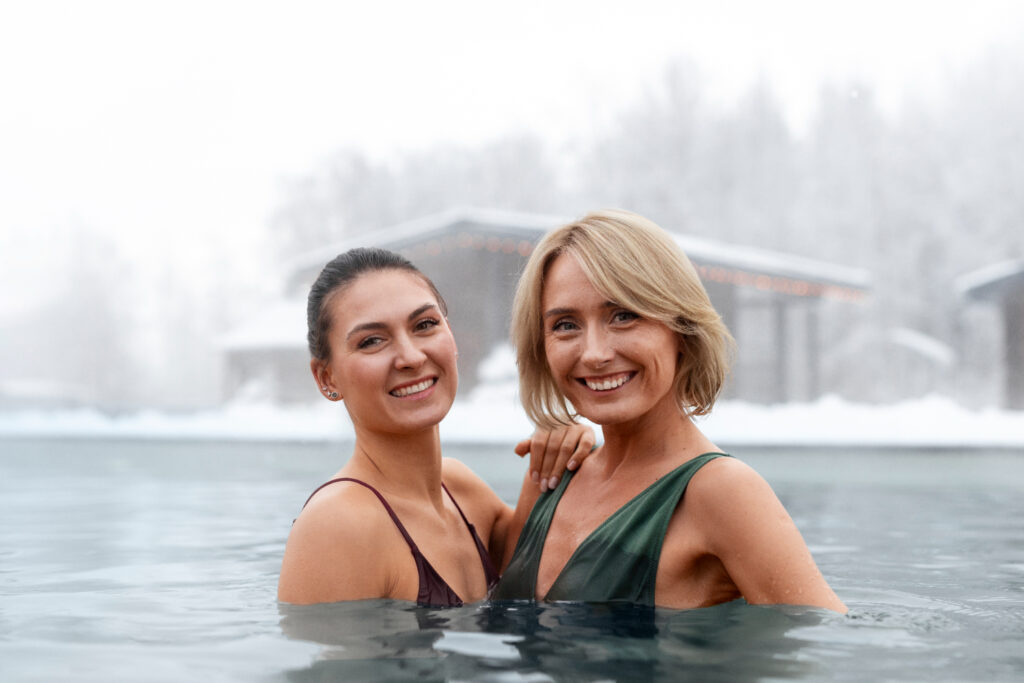The Ultimate Guide to Cold Plunges: Benefits, Science, and How to Get Started
Before we even get into what cold plunges are and if they can truly benefit you, let me share a personal story from my trip to Finland last December. While exploring the breathtaking Nordic landscape, I tried something truly transformative—a cold plunge in icy waters.
View this post on Instagram
It wasn’t just a dip for the sake of tradition; it was an experience that left me feeling energized, clear-headed, and alive.
Back in Mumbai, I was inspired enough to bring a slice of that Finnish magic home with a portable cold therapy setup. I invested in a portable ice bath, which allows me to enjoy the benefits of cold plunges in the comfort of my home. It’s not just a wellness practice; it’s a ritual that helps me reset my mind and body.
View this post on Instagram
But what makes cold plunges so impactful, and why are they becoming popular?
Let’s break it down.
What is a cold plunge?
A cold plunge, or Cold Water Immersion (CWI), is the practice of immersing your body in cold water (typically between 10-15°C, 50-60°F) for a short duration.
It’s not new; athletes have long used ice baths to recover from intense workouts. However, the practice has now extended beyond athletic circles, with wellness enthusiasts embracing it as a tool for enhancing mental clarity and emotional well-being.
Cold plunges can take various forms:
- Ice baths: Submerging your body in ice-cold water for a few minutes.
- Cold showers: A more accessible option that offers similar benefits.
- Open-water swimming: Swimming in cold lakes, rivers, or oceans for a more adventurous approach.
- Cryotherapy: Not water-based, it exposes the body to freezing air for short bursts.
Each method has its own protocols and benefits, but the underlying principle is the same: exposing the body to control cold stress triggers physiological and psychological benefits.
Have you heard of the Polar Bear Club?
It’s a fun trend, especially popular in places like New York, where people gather to jump into icy waters during winter. While it might seem like just a daring activity, many members say it leaves them feeling fresh, happy, and full of energy.
The best part? You’re not doing it alone. Being part of a group makes it more exciting!
But just because cold plunges could be beneficial, does it mean everyone should do it? Not necessarily. Every person is different, and in certain conditions, it might not be the best choice for you. We’ll discuss this a little later.

Now, let’s talk about the science behind cold plunges and mental health!
1. Mood enhancement and stress reduction
Cold water immersion has a profound impact on mood and stress levels. When you expose your body to cold, it activates your sympathetic nervous system, which releases noradrenaline, a hormone and neurotransmitter associated with focus and alertness. This sharp increase in noradrenaline can boost mood and reduce symptoms of anxiety and depression.
- A study on university students who immersed themselves in cold seawater (around 13.6°C) found a significant reduction in negative emotions like tension, depression, and anger. (Kelly JS, Bird E. Improved mood following a single immersion in cold water. Lifestyle Med. 2022; 3:e53. https://doi.org/10.1002/lim2.53)
- Participants also reported increased vigor and self-esteem. Another study involving beginners in cold-water swimming showed similar results, highlighting how even short exposures can lead to emotional benefits.
2. Endorphin release
Exposure to cold stimulates the release of endorphins, which are the body’s natural pain relievers. These chemicals not only ease discomfort but also create feelings of euphoria, often described as a natural high. It’s similar to the sensation athletes experience after an intense workout, commonly known as a runner’s high.
3. Stress hormone regulation
One of the most fascinating effects of cold plunges is their ability to modulate cortisol, the body’s primary stress hormone.
- While cortisol levels remain stable during a cold plunge, they significantly drop afterward. This reduction can last for hours, helping the body manage stress more effectively over time.
- People who engaged in regular cold-water swimming experienced a progressive decrease in cortisol levels over several weeks. This adaptation not only helped them handle the stress of cold exposure but also improved their resilience to everyday stressors.
4. Brain health and cognitive function
Cold water immersion doesn’t just impact mood; it can also benefit brain health. The sudden temperature drop stimulates cold receptors in the skin, sending electrical impulses to the brain. This intense stimulation increases blood flow, enhances focus, and boosts energy levels.
- Research suggests that cold plunges may even play a role in preventing neurodegenerative diseases. When exposed to cold, the body produces cold-shock proteins like RNA-binding protein (RBM3), which have been shown to repair nerve connections in animal studies. (Marco Preußner, Heather L Smith, et al. ASO targeting RBM3 temperature‐controlled poison exon splicing prevents neurodegeneration in vivo, EMBO Mol Med (2023) 15: e17157)
- While more human studies are needed, these findings open exciting possibilities for using cold exposure in brain health interventions.
The role of mindfulness in cold plunges
One of the underrated aspects of cold plunges is how they teach mindfulness. The immediate discomfort forces you to focus on your breath and stay present, fostering a meditative state. Over time, this can improve your ability to manage stress and stay calm under pressure.

As Dr. Steven Geanopulos, a board-certified chiropractic neurologist in my podcast said, cold plunges offer more than just physical benefits—they teach us to embrace discomfort.
He said, “My practice is to allow for some degree of suffering. I like to do cold plunges and saunas. These are uncomfortable environments that reward you afterward. When you step into a cold plunge, it’s painful, but the dopamine hit you get afterward is greater than almost anything else.”
He explained that facing controlled stressors like cold plunges creates contrast in life, making moments of comfort and joy even more rewarding. It’s a reminder that stepping outside your comfort zone can lead to growth and greater appreciation for life.
Now that we’ve covered the science-backed benefits, let’s explore who can safely enjoy cold plunges and who should approach them with caution.
Who should (and shouldn’t) try cold plunges?
While cold plunges offer numerous benefits, they aren’t for everyone. Some groups should exercise caution or refrain from trying this practice entirely:
Safe for:
- Healthy individuals looking to enhance mental clarity or recovery.
- Those who gradually acclimatize to cold exposure.
Not recommended for:
- Individuals with heart conditions or a history of arrhythmias.
- People with Raynaud’s disease, which causes extreme sensitivity to cold.
- Pregnant individuals or those with underlying health conditions—always consult a doctor first.
Getting started with cold plunges
If you’re intrigued by the idea, here’s how to begin safely:
- Start small: Begin with short durations (1-2 minutes) and slightly warmer temperatures (around 20°C, 68°F).
- Consistency is key: Regular exposure helps your body adapt over time.
- Listen to your body: If you feel dizzy, excessively cold, or uncomfortable, stop immediately.
- Never go alone: Especially in open water, always have a partner nearby for safety.
- Warm up gradually: After your session, warm up slowly to avoid shocking your body.

Cold plunges in everyday life
Even if you don’t have access to a lake or a fancy cryotherapy chamber, there are simple ways to incorporate cold exposure into your routine:
- Cold showers: Finish your regular shower with 30 seconds of cold water, gradually extending the time as you get accustomed.
- DIY ice baths: Fill a bathtub with ice and water at home.
- Cold face immersion: Dip your face into a bowl of icy water for a quick mental reset.
The last word…
Cold plunges are a powerful tool for improving mental and physical health, but they’re not a one-size-fits-all solution. While research shows promising benefits, it’s crucial to approach this practice mindfully.
Always listen to your body.
For me, cold plunges have become a way to reconnect with my body and clear my mind. It works for me, find what works for YOU!
Whether you’re diving into icy waters in Finland or stepping into a cold shower at home, the journey is as much about mental growth as it is about physical adaptation.
Disclaimer: This blog is for informational purposes only and is not a substitute for professional medical advice, diagnosis, or treatment. Always consult a healthcare professional before starting any new wellness practice, especially if you have pre-existing health conditions.
Wondering if cold plunges are right for you?
Set up a one-on-one consultation with our integrative team to guide you with personalized solutions for incorporating cold plunges into your routine for better mental clarity, stress relief, and overall well-being.
Reach out to us at 1800 102 0253 or write to us at consults@lukecoutinho.com.
|
From a pimple to cancer, our You Care Wellness Program helps you find a way Talk to our integrative team of experts today 18001020253 |










Leave a Reply